Oystercatchers are charismatic shorebirds renowned for their striking appearance and distinctive feeding behavior. Belonging to the Haematopodidae family, they are primarily found in coastal regions worldwide, inhabiting sandy beaches, rocky shores, and mudflats.
With their long, orange bills and bold black and white plumage, Oystercatchers are easily recognizable as they forage along the shoreline, probing into the sand and mud for prey.
Their diet primarily consists of shellfish such as mussels, clams, and oysters, which they pry open with their specialized bills.
Oystercatchers play a crucial role in coastal ecosystems, regulating intertidal populations and contributing to the dynamic balance of marine habitats.
Their distinct calls and elaborate courtship displays add to their allure, making them a favorite subject among birdwatchers and coastal enthusiasts alike.
Identifying Criteria of Oystercatchers
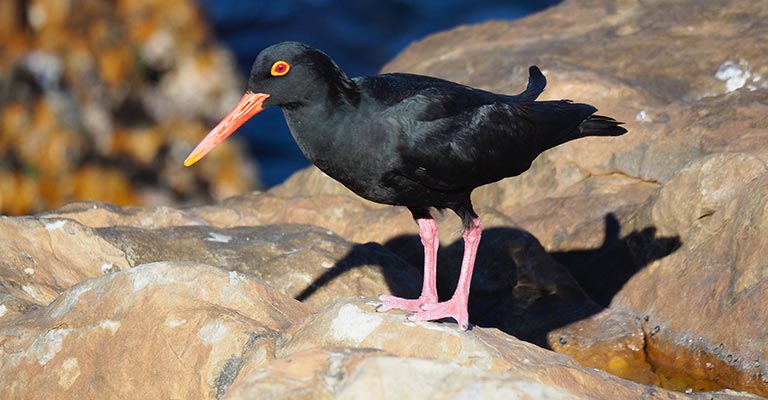
Identifying Oystercatchers in the field requires attention to several key characteristics that distinguish them from other shorebirds. Here are eight identifying criteria for Oystercatchers:
Distinctive Plumage
Oystercatchers have bold black and white plumage, making them easily recognizable. Most species have a black back, wings, and head, with a white belly and underparts.
This striking contrast in coloration helps them stand out against the sandy or rocky backgrounds of their coastal habitats.
Long, Orange Bill
One of the most distinctive features of Oystercatchers is their long, orange bill. The bill is stout, straight, and sharply pointed, resembling a chisel.
This specialized bill is adapted for prying open shells of bivalves such as mussels and clams, which are the primary food source for Oystercatchers.
Bright Eye Color
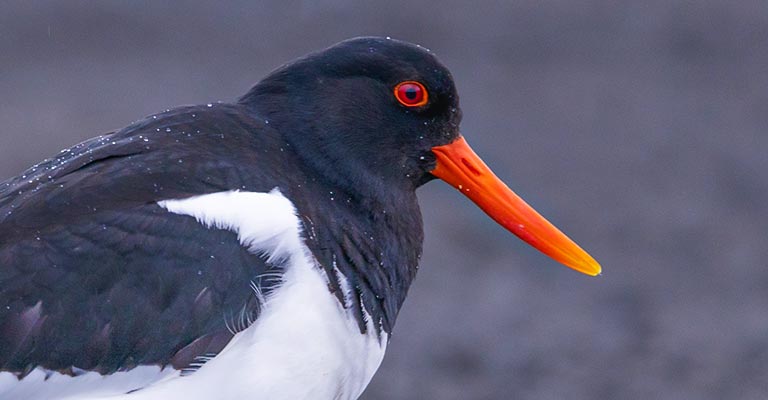
Oystercatchers typically have bright red or orange eyes, which contrast with their black and white plumage.
The eye color is particularly vivid in breeding adults and serves as an additional identifying feature, especially when observing Oystercatchers from a distance.
Leg Color
Oystercatchers have long, sturdy legs that are adapted for wading and foraging along the shoreline. Their legs are usually pink or flesh-colored, although some species may have slightly darker or lighter hues.
Paying attention to leg color can help distinguish between different species of Oystercatchers.
Size and Shape
Oystercatchers are medium-sized shorebirds, with adults typically measuring between 15 to 20 inches in length. They have a robust build, with a rounded body, long legs, and a distinctive upright posture when standing or walking along the shoreline.
Behavioral Cues
Oystercatchers exhibit characteristic feeding behaviors, including probing and pecking at the sand or mud with their bills to locate prey.
They may also be observed using their bills to pry open shells or chasing after small crustaceans along the shoreline. These behaviors can help confirm the identification of Oystercatchers in the field.
Habitat Preference
Oystercatchers are typically found in coastal habitats, including sandy beaches, rocky shores, mudflats, and salt marshes.
They are rarely observed far inland and are most commonly encountered along the shoreline, where they forage for food and nest in suitable locations.
Vocalizations
Oystercatchers produce a variety of calls, including loud, piping notes used for communication and territorial defense.
Learning to recognize their distinctive calls can aid in identifying Oystercatchers, especially in areas with multiple shorebird species present.
By paying attention to these identifying criteria, birdwatchers, and enthusiasts can confidently recognize and appreciate the unique characteristics of Oystercatchers in their coastal habitats.
Taxonomy of Oystercatchers
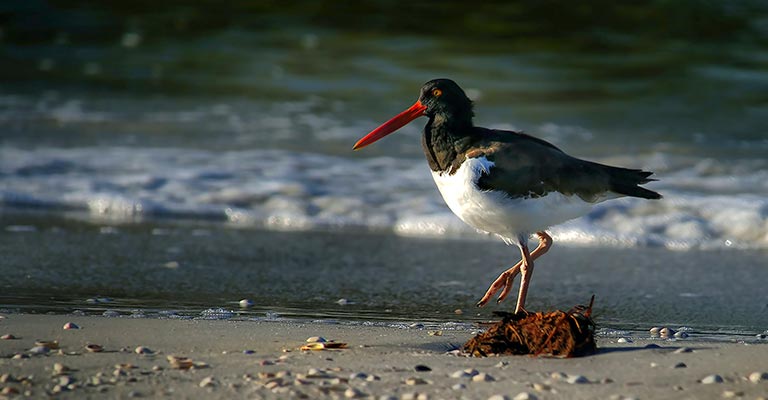
Here’s a table outlining the taxonomy details of this bird:
| Domain | Eukaryota |
| Kingdom | Animalia |
| Phylum | Chordata |
| Class | Aves |
| Order | Charadriiformes |
| Suborder | Charadrii |
| Family | Haematopodidae Bonaparte, 1838 |
| Genus | Haematopus |
| Species | Oystercatcher (Haematopus sp.) |
The birds listed – Black Oystercatcher, American Oystercatcher, and Eurasian Oystercatcher – belong to the same species as Oystercatchers, collectively known as the oystercatcher family (Haematopodidae).
While they share many similarities in appearance and behavior, each species also possesses unique characteristics that distinguish them from one another.
Black Oystercatcher (Haematopus bachmani)
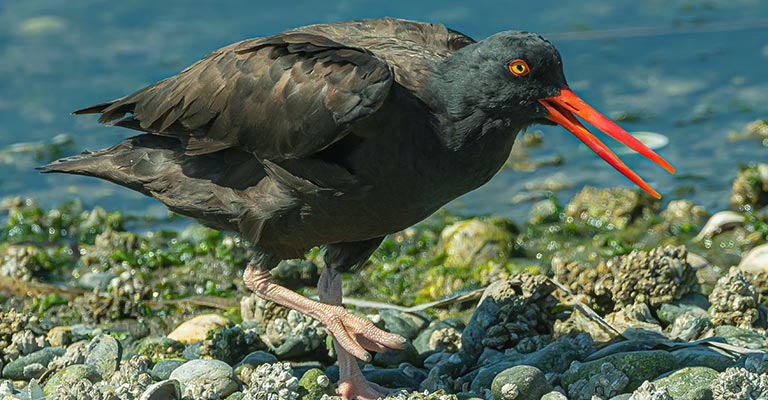
The Black Oystercatcher is primarily found along the rocky shorelines of western North America, from Alaska to Baja California.
It is distinguished by its entirely black plumage, long orange bill, and bright red eyes. Black Oystercatchers feed on a variety of intertidal invertebrates, including mussels, limpets, and barnacles.
American Oystercatcher (Haematopus palliatus)
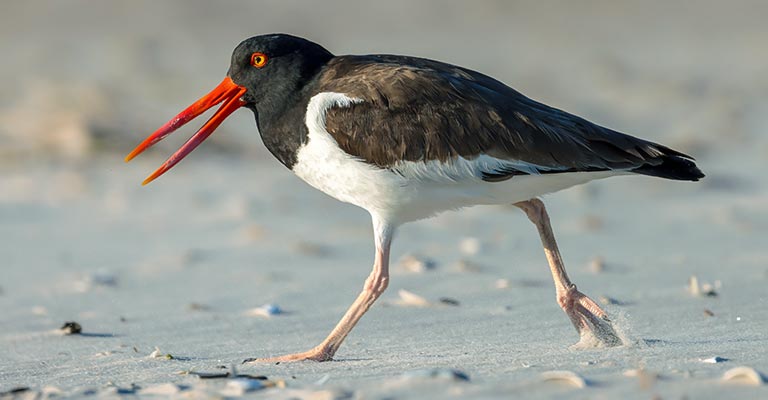
The American Oystercatcher is native to the Atlantic and Gulf coasts of North and South America.
It has black and white plumage, with a distinctive black head, back, and wings, and a white belly. Its bill is long, thick, and orange, used for prying open shells of bivalves such as oysters and clams.
Eurasian Oystercatcher (Haematopus ostralegus)
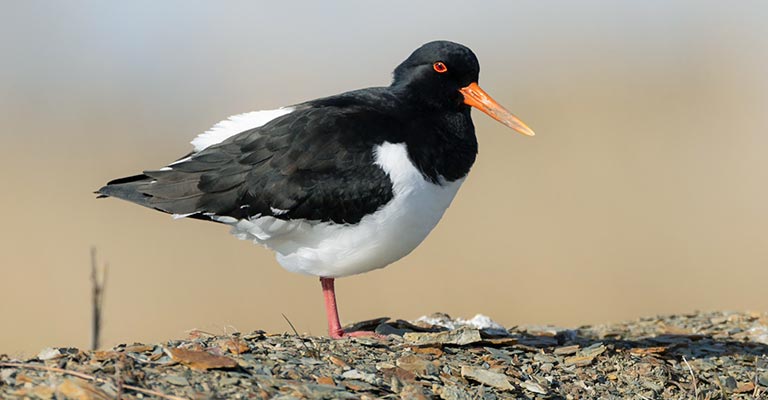
The Eurasian Oystercatcher is found across Europe and Asia, with a range extending from Scandinavia to the Middle East and China. It has black and white plumage, with a red bill and red legs.
Like its counterparts, the Eurasian Oystercatcher feeds primarily on mollusks and other intertidal invertebrates along coastal shorelines.
While all three species share the common trait of feeding on shellfish and other intertidal prey, their specific ranges, plumage patterns, and vocalizations vary, reflecting their adaptations to different coastal environments.
Despite these differences, they are all integral components of coastal ecosystems, playing vital roles in regulating intertidal populations and contributing to the biodiversity of coastal habitats.
Common Food of Oystercatchers
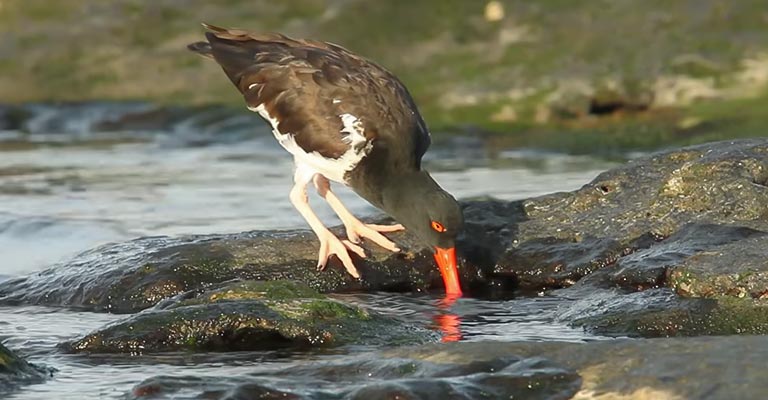
Oystercatchers are specialized shorebirds with a diet primarily consisting of shellfish and other intertidal invertebrates. Their common food habits include:
- Mussels: Oystercatchers use their long, sturdy bills to pry open the shells of mussels, accessing the soft flesh inside.
- Oysters: Similar to mussels, oysters are a staple food for Oystercatchers, providing a rich source of nutrients.
- Clams: Oystercatchers feed on various species of clams, using their bills to probe into the sand and extract the mollusks.
- Worms: In addition to shellfish, Oystercatchers also consume marine worms, which they may find by probing into the sand or mud.
- Crustaceans: Oystercatchers occasionally feed on small crustaceans such as crabs and shrimp, adding diversity to their diet.
These specialized feeding habits allow Oystercatchers to thrive in coastal environments, where they play a vital role in maintaining the balance of intertidal ecosystems.
Oystercatchers Life History
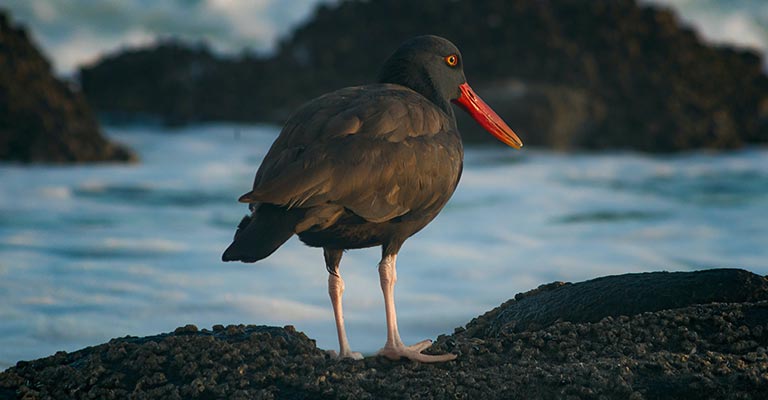
Oystercatchers, with their striking appearance and distinctive behavior, are fascinating coastal birds found in various parts of the world.
Understanding their life history sheds light on their ecological importance and the challenges they face in their coastal habitats.
Range Map
Oystercatchers have a global distribution, with different species inhabiting coastal regions across the Americas, Europe, Asia, Africa, and Australasia.
Their range map varies by species, with some, like the American Oystercatcher, found along the eastern and western coasts of North and South America, while others, such as the Eurasian Oystercatcher, are prevalent throughout Europe and Asia.
Hunting Habit
Oystercatchers are specialized feeders, primarily preying on shellfish such as mussels, oysters, and clams.
Using their long, sturdy bills, they probe and pry open shells to access the soft flesh inside. They often forage along intertidal zones, timing their feeding activities with the ebb and flow of tides to maximize their hunting success.
Breeding
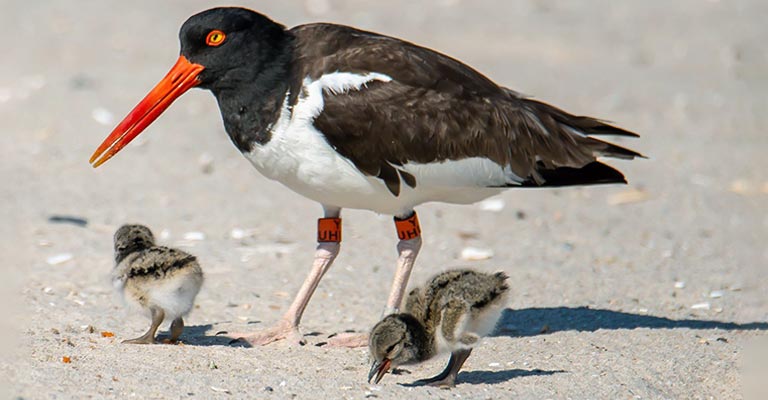
Breeding among Oystercatchers typically occurs in the spring and summer months.
They select nest sites above the high-tide line, often on sandy or gravelly beaches, among coastal vegetation, or on rocky outcrops. Both male and female Oystercatchers participate in nest building, incubating the eggs, and caring for the young.
Diseases
Oystercatchers are susceptible to a range of diseases, including avian influenza, avian botulism, and parasitic infections.
These diseases can impact individual birds, as well as populations, leading to mortality and reduced breeding success, particularly in areas with high population densities.
Treatment
Efforts to treat and prevent diseases in Oystercatchers often involve veterinary care, monitoring of wild populations for signs of illness, and habitat management to reduce disease transmission.
Vaccination programs may also be implemented to protect vulnerable populations from outbreaks.
Conservation
Oystercatchers face various conservation challenges, including habitat loss, human disturbance, pollution, and climate change.
Conservation efforts aim to protect their coastal habitats through habitat restoration, management of human activities, and designation of protected areas.
Public education and awareness campaigns also play a crucial role in fostering appreciation for Oystercatchers and their importance in coastal ecosystems.
Understanding the life history of Oystercatchers provides valuable insights into their ecological role and the conservation measures needed to ensure their long-term survival in coastal environments.
Nesting Habit of Oystercatchers
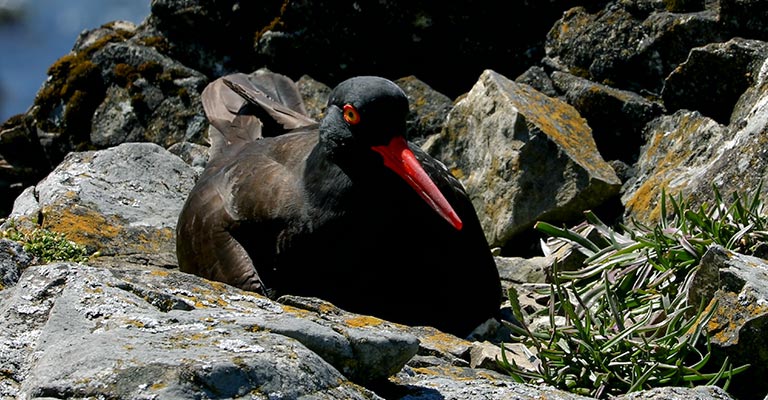
Oystercatchers are ground-nesting birds, preferring coastal habitats such as sandy beaches, rocky shores, or shingle banks for nesting.
They typically select a well-camouflaged nest site above the high-tide line, often in a shallow scrape or depression lined with pebbles, shells, or vegetation.
Both male and female Oystercatchers share incubation duties, taking turns to keep the eggs warm for about a month.
Once hatched, the chicks are precocial and can leave the nest shortly after birth, although they continue to be cared for by their parents until they are fledged and able to fend for themselves.
| Nesting Details | Details |
| Clutch Size | Usually 2 to 4 eggs per clutch |
| Number of Broods | Typically 1 brood per breeding season |
| Egg Length | Approximately 2 to 3 inches |
| Egg Width | Around 1.5 to 2 inches |
| Incubation Period | Roughly 24 to 28 days |
| Nestling Period | Approximately 25 to 35 days after hatching |
| Egg Description | Usually speckled or mottled with a range of colors, including pale to dark brown or olive, sometimes with black speckles or blotches. Shape is typically oval or pear-shaped. |
10 Behavioral Habits of Oystercatchers
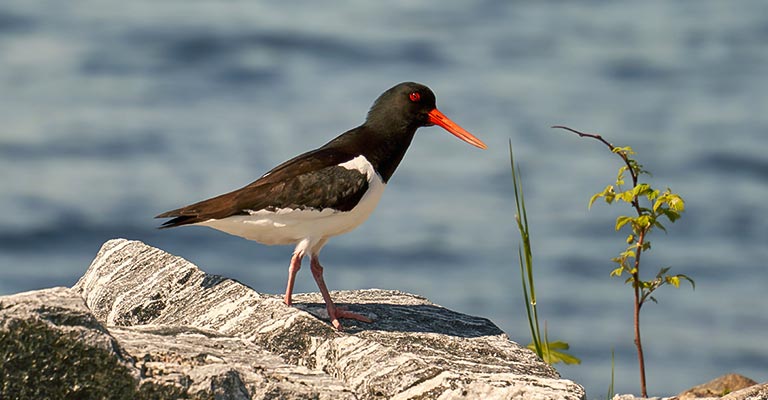
Oystercatchers, charismatic coastal birds with striking plumage and distinctive long, orange bills, exhibit a fascinating array of behavioral habits that contribute to their survival and success in their coastal habitats.
Here are 10 behavioral habits of Oystercatchers:
Feeding Strategy
Oystercatchers are specialized shorebirds with a unique feeding strategy. They use their long, sturdy bills to probe and pry open shellfish, such as mussels and oysters, which they consume as a primary food source.
Tide Timing
Oystercatchers are highly attuned to tidal movements, often timing their foraging activities to coincide with low tides when intertidal prey becomes accessible along the shoreline.
Territorial Behavior
Oystercatchers are territorial birds that defend prime feeding and nesting sites from intruders. They may engage in aggressive displays, such as aerial pursuits and loud vocalizations, to deter rivals.
Nesting Site Selection
Oystercatchers carefully select nesting sites above the high-tide line, typically on sandy or gravelly beaches or among coastal vegetation. They create shallow scrapes in the substrate for their nests, often lined with pebbles or shell fragments.
Incubation Duties
Both male and female Oystercatchers share incubation duties, taking turns to warm the eggs and protect them from predators. This shared parental responsibility helps ensure the success of the breeding pair.
Precocial Chicks
Oystercatcher chicks are precocial, meaning they are born with downy feathers and are capable of moving and feeding themselves shortly after hatching. They follow their parents to foraging areas and quickly learn essential survival skills.
Vocal Communication
Oystercatchers use a variety of vocalizations to communicate with each other, including loud, piping calls used for territorial defense, courtship displays, and maintaining contact with mates and offspring.
Mating Displays
During the breeding season, Oystercatchers engage in elaborate courtship displays, including aerial flights, ritualized movements, and vocalizations. These displays strengthen pair bonds and reinforce territorial boundaries.
Social Structure
Oystercatchers often forage and roost in small groups or pairs, particularly during the non-breeding season. They may form loose flocks with other shorebird species, providing additional protection from predators.
Seasonal Movements
Oystercatchers exhibit seasonal movements, with some populations undertaking long-distance migrations between breeding and wintering grounds. These migrations may involve thousands of miles of travel along coastal and inland routes.
The behavioral habits of Oystercatchers reflect their adaptability to coastal environments and their reliance on specialized feeding strategies.
By understanding and appreciating these behaviors, we can better appreciate the vital role these charismatic birds play in coastal ecosystems.
Wrapping Up
Oystercatchers embody resilience, adaptability, and a unique connection to coastal ecosystems.
From their striking appearance to their intriguing nesting habits and vital role in maintaining biodiversity, these charismatic birds captivate the imagination of birdwatchers and conservationists alike.
By understanding and appreciating the fascinating aspects of Oystercatchers’ lives, we can better appreciate the intricate web of life along our coastlines and work towards ensuring the protection of their habitats for generations to come.
Let us continue to celebrate the beauty and significance of Oystercatchers while advocating for their conservation and the preservation of our precious coastal environments.